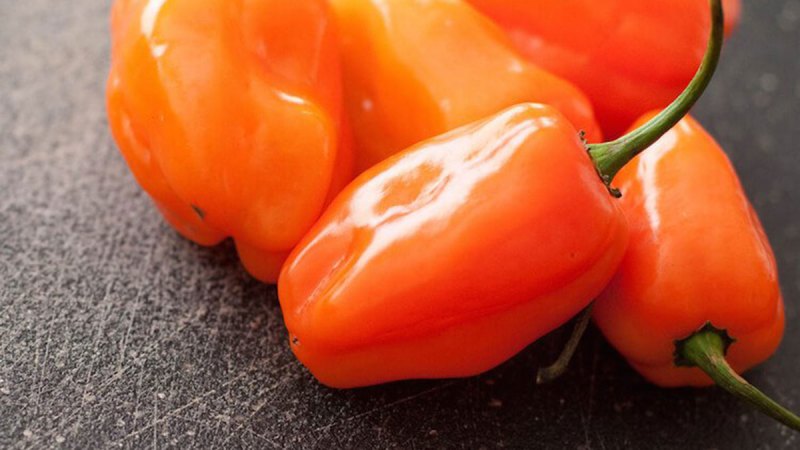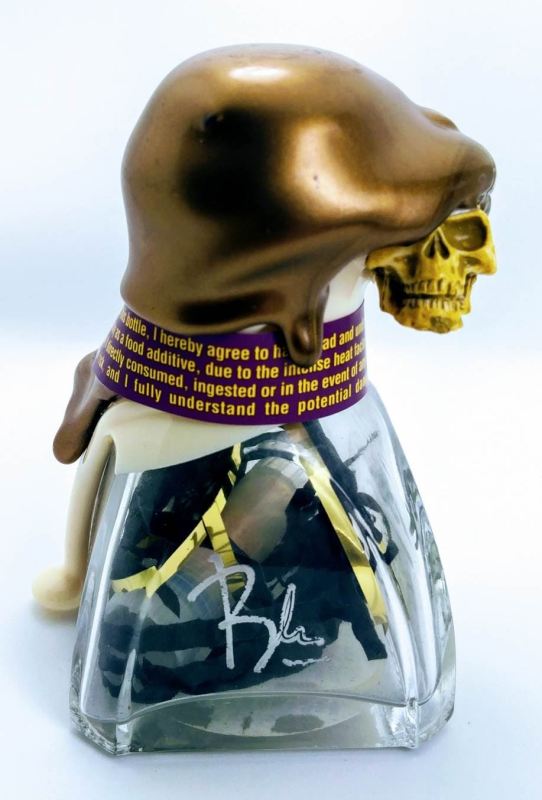
There’s a special kind of person who loves hot sauce to an unhealthy degree. Most of us know one or two of these people. They are the ones who order the hottest of the hot chicken wings, boasting that nothing will bring them down. They are the proud wearers of T-shirts that say things like, “No heat, no eat.” They are the loud, the proud, and the fearless when it comes to all things hellish and fiery. They’re also the ones turning what should be a pleasurable eating experience into a potential trip to the ER. But hey, to each their own.
If you’ve ever wondered what makes hot sauce hot, the answer lies in the peppers used. Peppers’ heat is ranked on what is called the Scoville Scale, a scale that ranks peppers according to their pungency and capsaicin levels.
A bell pepper, for example, registers 0 Scoville heat units (SHUs), because it contains no capsaicin, the ingredient responsible for the heat, pain, terror, euphoria, and everything else involved in eating spicy foods. A jalapeno? A paltry 5,000 SHUs. A Carolina Reaper, one of the hottest peppers on the planet, clocks in at 1.5 million SHUs. And pepper spray — the stuff used to stop criminals — is around 5.3 million SHUs.
For these lovers of heat, eating is less an enjoyable way to deliciously nourish our bodies and more of a hard-core death metal sport. And those who participate would likely agree wholeheartedly, as it seems to be a spritely, fiery group of enthusiasts when it comes to the world of hot sauce fandom. For these enthusiasts, and for the less brazen (sane) supporters looking for a spicy gift or two, these hot sauces are the hottest of them all.
According to Scovillescale.org, Blair’s Death Sauce and Snacks makes the hottest hot sauce in the world that you can actually purchase and use in your own kitchen. You know, if you’re looking to really scare off your mother-in-law or something. Blair’s three hottest condiments all top out at an unholy 16 million SHUs and include:

Blair’s 16 Million Reserve (pure capsaicin crystals)
Only 999 of the 16 Million Reserve bottles were produced, so getting your hands on a bottle is a fiery feat in and of itself. These capsaicin crystals were awarded the World’s Hottest Product by the Guinness Book of World Records and will set you back about $600.

Blair’s 6 A.M. Reserve (pure capsaicin crystals)
Peppers of Key West calls this product a “masterpiece,” ranging in SHUs from a “mere” 10.3 million to 16 million and absolutely blowing the socks of any brave soul who dares to try it. You can buy this one from Peppers of Key West for a mere $700.

Blair’s Halloween Reserve 2009 (extract)
This particular varietal comes in a special pumpkin bottle made from handblown glass and filled with jolokia ghost chili. This special reserve is an absolute steal at just $2,000 from Peppers of Key West.
What to eat or drink after eating hot sauce to cool the mouth
That burning sensation in your mouth after indulging in some hot sauce caused by capsaicin isn’t fun. While water might seem like the go-to solution, it actually spreads the capsaicin around, making the fire worse. Here are some effective drinks and foods to cool down your mouth after a hot sauce adventure.
- Milk: The casein protein in milk binds to capsaicin, effectively neutralizing its burning effect. Opt for whole milk, as the fat content further helps trap the capsaicin.
- Yogurt: Similar to milk, yogurt’s probiotics and casein protein offer soothing relief. Choose plain yogurt for maximum cooling effect.
- Ice cream: If you’re looking for a more indulgent option, a scoop of cold ice cream can do wonders. The combination of milk, fat, and coldness effectively numbs the burning sensation.
- Citrus juices: The acidity in juices like orange, grapefruit, or lemon can help counterbalance the capsaicin’s alkalinity.
- Tomato juice: The acidity and natural sweetness of tomato juice can provide relief, especially if you enjoyed the hot sauce on a tomato-based dish.
- Coconut water: The electrolytes and natural sweetness in coconut water can help soothe the burning sensation and rehydrate you.
- Honey: A spoonful of honey can coat your tongue and provide a temporary barrier against the capsaicin, offering some relief.
If you do decide you’re crazy enough to actually buy one of these, just make sure to take a video. And have plenty of milk nearby. And a hospital.



